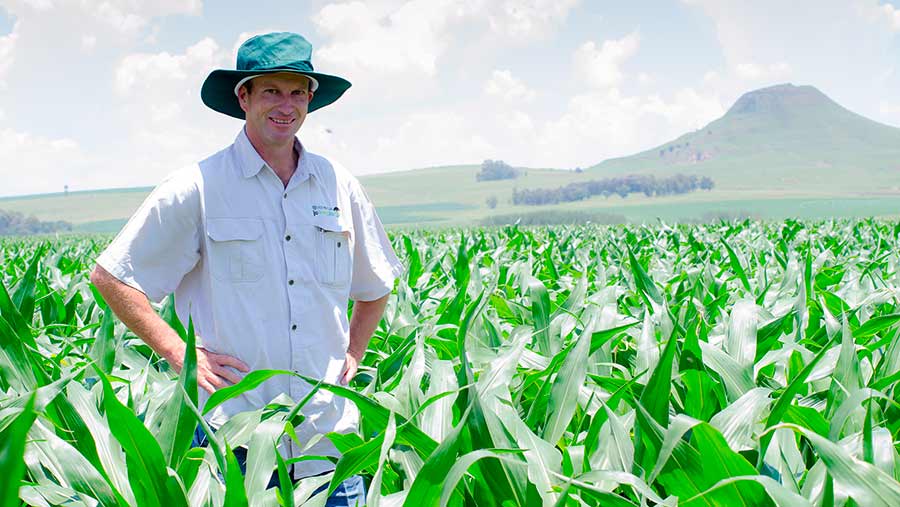Farmer Focus: Mob grazing cover crops is the way forward
 © Karen Edwards
© Karen Edwards Coronavirus has arrived in South Africa. The power of this virus on those not infected is truly amazing.
People who haven’t contracted it yet seem to loose all logical thinking and run for the hills – literally, in some cases.
Those infected develop flu-like symptoms for a few days.
See also: How a grower achieved best margin with £105/ha fungicide spend
Quite a few years ago, the no-till virus infected me. This virus also had a profound effect on my logical thinking, but fortunately it is showing no signs of leaving my system.
A few years later, this no-till virus mutated into the much more virulent cover-crop virus, and it’s got me properly too.
This summer, I planted a summer cover crop on a field with very low soil organic matter.
Rain infiltration was poor, which translated into poor crop yields.
My goal with the cover crop was to provide an organic mulch on the surface of the soil, as well as more roots in the soil profile.
Mob grazing
We have recently started to graze this cover crop. We carved out 1ha wedges with an electric fence and mob grazed them, a new hectare every day.
You would think that grazing a cover crop would be counter-productive, as you are removing precious organic matter, but the opposite is true, as I am now witnessing.
Prior to putting the cattle in, the cover crop was tall and going into seed.
From the side of the field it looked magnificent, but walking in, it was just tall with a lot bare soil between the plants.
As the plants were in their reproductive phase, their priority had shifted from vegetative growth to seed filling.
To boost organic matter, we want vegetative growth, both above and below the ground.
Every day when the cattle leave a wedge, you can see they have done their magic.
They have eaten the nutritious stuff, translating it into weight gain.
Yesterday’s “nutritious stuff “ becomes today’s compost somewhere in the field.
By mob grazing, whatever isn’t eaten is trampled onto the soil surface, creating that much-needed mulch.
The area that was grazed two weeks ago is now green with new vegetative growth.
If only this cover crop virus was as contagious as the coronavirus, we would have healthier food grown on a healthier planet.

